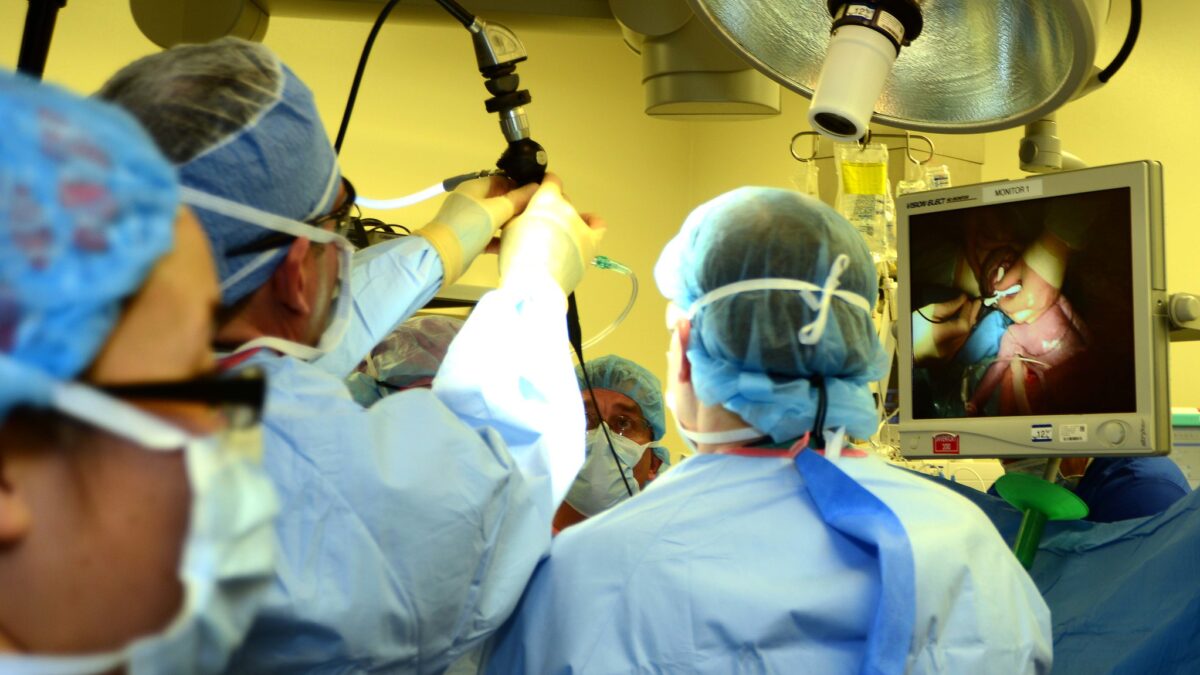A recent front page of The Hartford Courant had an interesting juxtaposition. The headline under the masthead read, “Abortion Joins Top Election Issues,” a reference to developments after the Supreme Court Dobbs ruling on June 24 reversing Roe v. Wade. Immediately below this headline appeared another article, “Cutting-edge care for the tiniest patients,” an account of the new fetal surgery center opening at Connecticut Children’s Hospital in Hartford.
Now, the front-page editor at The Courant might be clueless — or more likely just have a wry sense of irony. The two stories on page one could not be more dissonant. One tells how the choice to end human life in the womb may once again be a political football. The other sets forth how the most dramatic developments in medicine are leading to the recognition that children in the womb are candidates for care — including lifesaving surgery — that was unthinkable a few short decades ago. In fact, these developments are so rapid that children’s hospitals across the nation have been opening separate fetal surgery units.
The medical and scientific skill and acumen involved are stunning. This perinatal revolution is one of the great advances in patient care in the past few decades. The world’s attention to this revolution was first riveted by a photograph of fetal surgery performed on 21-week-old Samuel Armas in 1999. This picture made its way — and some waves — around the world, revealing tiny Samuel’s fist grasping the finger of the surgeon as he began to close up the incision into his mother’s womb. A set of photos of Samuel in subsequent years can be seen at a website maintained by photographer Michael Clancy.
Today, the array of procedures that can be performed to help the unborn patient in the womb continues to grow, and the stage of pregnancy at which these procedures can be performed is earlier and earlier. Prenatal surgical repair of spina bifida, a condition in which the unborn child’s developing spinal cord is exposed, subjecting the child to debilitating injury, was initiated in 1997, and by 2010, the Management of Myelomeningocele Study (MOMS) definitively demonstrated superior outcomes to postnatal surgery. Twin-to-twin transfusion syndrome surgery has been successfully performed as early as 15 weeks of gestation with fetoscopic laser ablation.
Massive Growth in the Field
These and other procedures have contributed to the abolition of the “viability standard” of 24 to 28 weeks of gestation cited in the 1973 Roe decision. Overall viability of unborn children has been affected via these medical advances so that babies born at 22 and even 21 weeks of gestation — barely halfway through pregnancy — are surviving and enjoying better health when they do. According to a Duke University study, mortality of extremely premature infants declined from 55 percent to 42 percent between 1998 and 2011 and neurodevelopmental impairment among surviving infants declined from 68 percent to 47 percent.
Because of these advances, the number of fetal care centers and maternal-fetal specialists has exploded across the nation. In 2022 there are 37 dedicated U.S. medical centers across the United States that perform advanced in-utero fetal therapeutic procedures. These centers are located in 21 states and 31 cities. Of course, not all babies at the fetal stage of development can be helped. To support families coping with the imminent loss of such a child, there are now 121 perinatal hospices across the country. These programs are a subspecialty of maternal-fetal medicine, treating the unborn like any other patient whose life is invaluable but cannot be saved. Over 70 percent of the programs were created in the last 10 years.
The maternal-fetal medicine (MFM) specialty is intense, with high stakes, dramatic changes, and high rewards. In 2010 there were 1,355 MFM specialists in the United States; now there are 1,587. These practitioners exist in all but one state (Wyoming), and the increases in some locales over the past decade are as high as 600 percent (Virginia) and 400 percent (District of Columbia). Nationwide, there is approximately one MFM specialist for every 14 general obstetrician-gynecologists and for every 2,277 births.
Celebrating Life
These facts underscore how the scientific and medical reality has changed since 1973. The contrast is too vivid to ignore. Each year what began as a small event in a conference room at the Children’s Hospital of Philadelphia has expanded into a mega-event called the Fetal Family Reunion. The joy-filled gathering of children whose lives were saved through groundbreaking in utero medical treatment was held again this summer, on June 5, only this time the rising number of participants necessitated moving the event to the Philadelphia Zoo. Parents and children numbering well over 3,000 came together to celebrate the care they and their children received at the center affectionately known as CHOP.
In 2022 and beyond, this is the crossroads at which our nation stands. Will we see abortion as a political issue, a power struggle in the culture over who shall live, or will we witness the steady advance of medical miracles on behalf of our smallest brothers and sisters?









